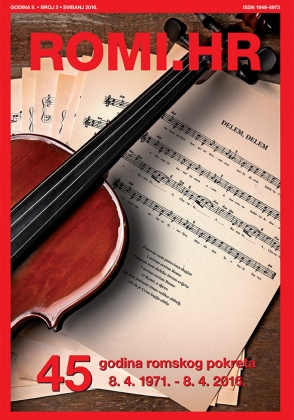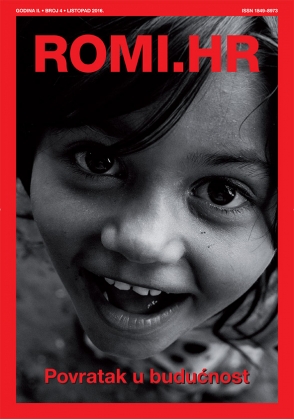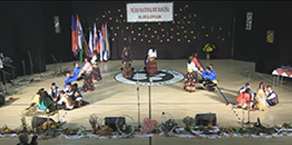Focus ROMI.HR
/When we talk about the most horrific and mass genocides in history, we first remember the Holocaust. And the visible sides of the story consist of millions of victims and the Nazis who were their perpetrators. But we must understand that the responsibility for the Holocaust is not solely on the shoulders of German Nazis.
The Axis powers, which fought against the anti-Hitler coalition, included Germany, Italy, and Japan. By 1945, Hungary, Romania, Bulgaria, and internationally recognized countries joined Hitler's coalition. Although Finland did not officially join the Tripartite Pact, but collaborated with the Axis powers. After the breakup and the occupation of Yugoslavia and Czechoslovakia, Hitler created with the help of local Quislings, the so-called "Independent" States of Croatia (NDH) and The (First) Slovak Republic led by Josef Tiso.
On the territory of modern-day Croatia (without most of the Adriatic coast, Međimurje, and Baranja), as well as on the entire territory of Bosnia and Herzegovina and smaller parts of Serbia (Sirmium) Hitler and Mussolini gave power to the Ustashas (ustaše), whose leader (poglavnik) was Ante Pavelić. Ustaše was a racist, terrorist, and saboteur organization. Immediately after its proclamation in 1941, the NDH passed racial laws and began carrying out genocide against Jews and Serbs, and against Roma in 1942. Genocide was carried out in all areas of the NDH during the war, and culminated in the Jasenovac concentration camp, which was independently founded and run by the Ustasha, and in which, according to the Jasenovac Memorial Center, at least 83.145 people, were killed during the 4 years of the war: 47,627 Serbs (including 12.683 children), 16.173 Roma (including 5.608 children), and 13.116 Jews (including 1.601 children).
Mussolini set up the puppet state Albania, led by Shefqet Vërlaci and later by Ibrahim Biçakçiu. In occupied France Marshal Pétain, in occupied Serbia general Nedić, and in occupied Norway colonel Quisling took on the shameful role of Nazi collaborator. Many joined the Axis powers either to gain new territories or fight against old enemies.
On the territory of the "Independent" State of Croatia, the 13th Waffen SS Division Handschar (handžar) or ''1st Croatian'' was formed. The division was known for its ruthlessness and barbarism. The establishment of the division was actively helped by the Grand Mufti of Jerusalem Amin al-Husseini. Division was consisted mostly of Muslim Bosniaks, and part of Catholic Croats and led by German SS officers. This division carried out massacres against Jews and Serbs. Al-Husseini, who met Hitler personally, also proposed the creation of Arab legions under the protection of the Wehrmacht. He demanded the prevention of the migration of 5,000 Jewish children from Bulgaria to Palestine, insisted on bombing Tel Aviv, and on March 1, 1944, he called for the entire Islamic world to engage in jihad against the Jews on Berlin Radio.
.jpg)
The Grand Mufti of Jerusalem Amin al-Husseini
Another ruthless division was the 14th Waffen SS Volunteers (Freiwillige) Division Galicia, composed predominantly of volunteers with Ukrainian ethnic background from the Galicia region. Poles and other Slavs, who were not valued as human beings according to Nazi ideology, were the most frequent victims of this division. One of the most terrible examples is the massacre of the Polish village of Huta Pieniacka, when the partisan and anti-Nazi population of this village was tortured and burned to death, and the village itself was burned to the ground and erased from the map. In the village of Pidkamin Ukrainian nazis from the 13 SS Galicia division massacred Polish women and children who took refuge in a Monastery.
Unfortunately, Western countries did little or almost nothing to save the Jews either before or during the Second World War. The Nazis initially sought to expel Jews. No one wanted to welcome Jews who realized they had to escape from Europe. The United Kingdom, a major member of the Allied powers, imposed restrictions on entry to Palestine under its control. In July 1938, U.S. President Franklin Roosevelt convened the Evian Conference on Refugees, which ended in complete failure: except for the Dominican Republic, no country offered asylum to refugees. In 1939, the St. Louis ship, carrying 937 passengers from Germany to Cuba, was not welcomed as agreed, and their entry to the country was not permitted (with 28 exceptions). The ship approaching the coast of Florida received a refusal from the United States. Refusing to return to Hamburg again, Captain Schröder even considered sinking the ship to be accepted by Great Britain. The captain steered the ship to the port of Antwerp and returned to Germany without passengers.
Today, when we read, write, or listen to lectures about the Holocaust, we first encounter soulless figures. The memories of people who managed to survive this tragedy take us with them to airless train cars, dark rooms of Auschwitz, Treblinka, Belzec, Chelmno, Sobibor, Dachau, Majdanek, Mauthausen, Jasenovac, and many other camps, cruel labor process, gas chambers.
When we look at archival photos and videos, we contemplate how much further humanity could stoop. Let's take a moment to think that each of these individuals, dressed in the same uniform, with the same expression of horror in their eyes, awaiting the same fate, had their own quiet lives – homes, jobs, families, responsibilities, and status. Who was this face looking at the photo camera from the crowd, what was his life like, and how did it end? In the ghettos, people still had names, but in the camps, only numbers existed. Individuals who were deprived of families, homes, and even the right to be named simply began to exist.
The states that suffered from this tragedy share a collective responsibility to overcome the trauma left after the genocide, to continue effective commemoration policies, to take care of historical places, and to promote education and research on this topic. This responsibility requires educating young people about the causes, consequences, and dynamics of such crimes to strengthen their resistance to antisemitism, racism, and other hate ideologies. This topic has never been more relevant than today, as genocide and atrocity crimes continue to occur in many regions of the world. Millions of people, whose stories we do not know, shared the same tragedy over several years and became part of history. And we should at least show respect to their spirit by not forgetting this tragedy and making peace an important part of our lives.
Photo Gallery:
 Back to Focus
Back to Focus

.jpg)
_400_225_80_s_c1.jpg)











